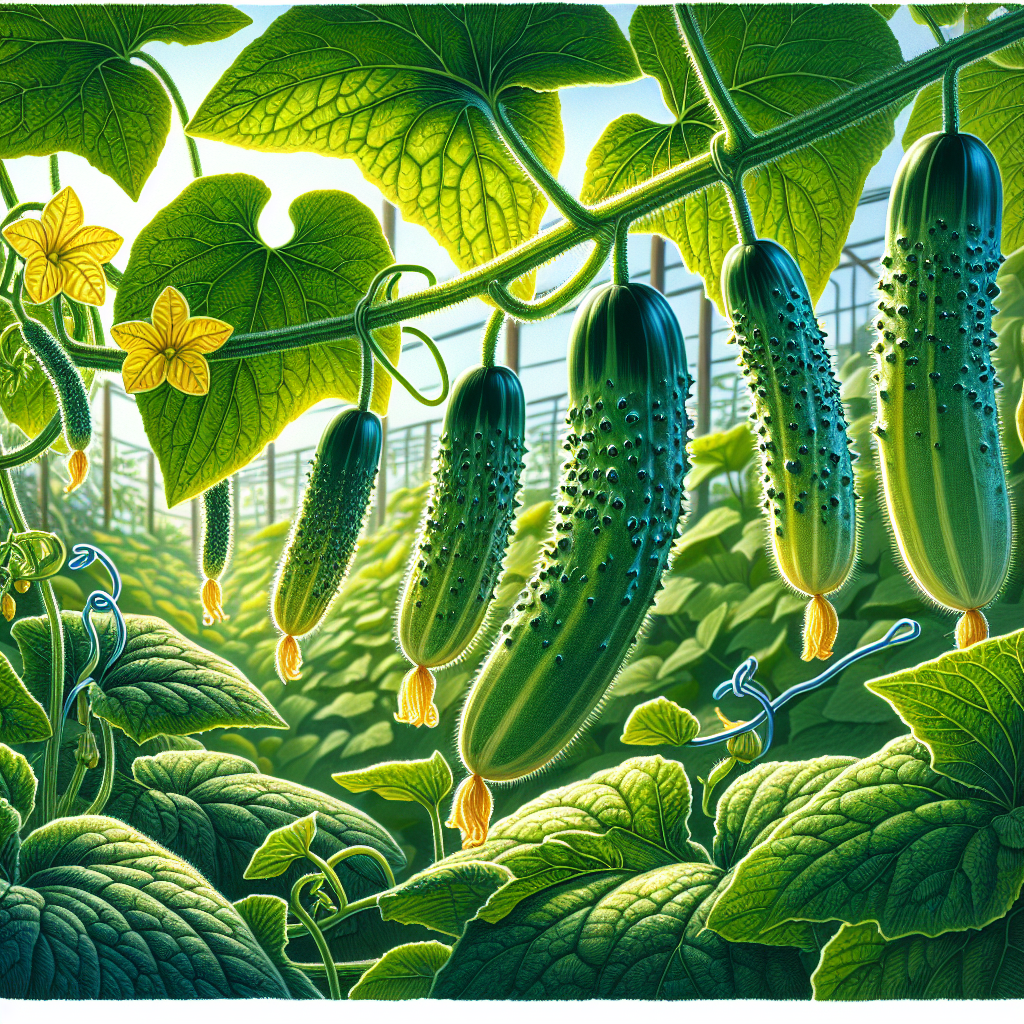
Show me how cucumbers grow
Understanding the Growth Process of Cucumbers
If you've ever wondered about the journey of a cucumber from seed to salad, you're not alone! The growth of cucumbers is a fascinating process that embodies the essence of gardening. From the initial planting to harvest day, cucumbers offer a unique glimpse into the world of horticulture. In this article, we'll explore the entire lifecycle of cucumbers, including their cultivation, growth stages, and the essential care they require. So, let’s dive in and explore the journey of this refreshing vegetable.
The Basics of Cucumber Plants
Cucumbers (Cucumis sativus) belong to the gourd family, Cucurbitaceae, which also includes pumpkins, squash, and melons. These plants are typically grown as annuals, with a growth cycle lasting about 60 to 70 days from seed to harvest. Here’s a quick overview of their characteristics:
- Growth Habit: Vining types and bush types.
- Climate: Prefer warm weather, ideally 70°F to 90°F.
- Soil: Well-drained, rich in organic matter with a pH of 6.0 to 7.0.
- Water Needs: Regular watering is essential for optimal growth.
Steps to Grow Cucumbers Successfully
Now that you understand the basics, let’s discuss how to successfully cultivate cucumbers. Below are the key stages and practices in cucumber cultivation.
1. Preparing the Soil
The first step to growing cucumbers is selecting the right location and preparing the soil. Follow these steps to create an ideal growing environment:
- Choose a sunny spot that receives at least six hours of direct sunlight daily.
- Test the soil pH to ensure it falls between 6.0 and 7.0.
- Clear the area of weeds and debris to create a clean planting surface.
- Add well-rotted compost or organic matter to enrich the soil.
2. Planting Cucumbers
When planting cucumbers, you have two options: direct seeding or transplanting seedlings. Direct seeding is common and can be done once the soil temperature reaches at least 60°F. To plant cucumbers:
- Plant seeds 1 inch deep, spaced about 3 feet apart for vining varieties or 2 feet apart for bush varieties.
- Water the area thoroughly after planting.
- If transplanting, start seedlings indoors about 3-4 weeks before the last frost and harden them off before transferring outdoors.
3. Providing Support
Cucumbers are climbers by nature. Providing support can enhance their growth and keep fruit clean. You can use:
- Trella or fence for vining types.
- Stake or cage for bush types.
Care and Maintenance of Cucumber Plants
Once you’ve planted your cucumbers, the next step is proper care and maintenance. This phase is crucial to ensuring a healthy and fruitful harvest.
Watering
Cucumbers require consistent moisture, especially during hot summer days. Here are tips for effective watering:
- Water once a week, providing about 1-2 inches of water.
- Avoid overhead watering to prevent disease and fungal growth.
- Mulch around the base of plants to conserve soil moisture.
Fertilizing
To promote strong growth, fertilizing cucumbers is essential. Follow these guidelines:
- Use a balanced fertilizer when seedlings are a few inches tall.
- Apply nitrogen-rich fertilizers when plants begin to flower to support fruit development.
- Follow instructions on the fertilizer package for dosage and frequency.
Pest and Disease Management
Like all plants, cucumbers are susceptible to pests and diseases. Some common pests include:
- Spider Mites: Tiny insects that can cause yellowing leaves.
- Cucumber Beetles: They can transmit diseases and harm seedlings.
- Powdery Mildew: A fungal issue that affects many garden plants.
Using organic pesticides, crop rotation, and maintaining the health of your garden can help manage these problems.
Harvesting Cucumbers
Finally, the exciting moment arrives—harvesting cucumbers! But when should you take that step? Here are some indicators:
- Choose cucumbers when they’re firm and green, typically between 6 to 8 inches long.
- Avoid waiting too long, as overripe cucumbers can become bitter.
- Pick cucumbers regularly to encourage further production.
“The best time to harvest cucumbers is in the morning when they're crisp and fresh!” – Gardening Expert
Post-Harvest Care
Once harvested, storing cucumbers properly ensures their longevity. Here are a few storage tips:
- Store cucumbers in a cool area, ideally between 50°F-60°F.
- Avoid storing cucumbers near fruits like apples and bananas, as they produce ethylene gas that accelerates ripening.
- Keep them in a breathable bag or container to maintain moisture without trapping air, preventing rot.
Common Questions About Cucumber Growth
What are the best varieties of cucumbers to grow?
Some popular cucumber varieties include:
- Marketmore 76: A reliable, disease-resistant slicing cucumber.
- Persian: Known for its tender skin and sweet flavor.
- Pickling Cucumbers: Smaller, crunchier varieties ideal for pickles.
How much space do cucumbers need to grow?
Cucumbers require space to spread, especially vining types. Aim for:
- 3-4 feet apart for vining varieties.
- 2 feet apart for bush varieties.
Conclusion
Now that you've learned about cucumber cultivation, you're well-prepared to take on this rewarding gardening endeavor. Whether you’re an experienced gardener or just starting, understanding how cucumbers grow can help you enjoy a bountiful harvest. So roll up your sleeves, plant some seeds, and enjoy the refreshing benefits of home-grown cucumbers!
By Guest, Published on October 16th, 2024